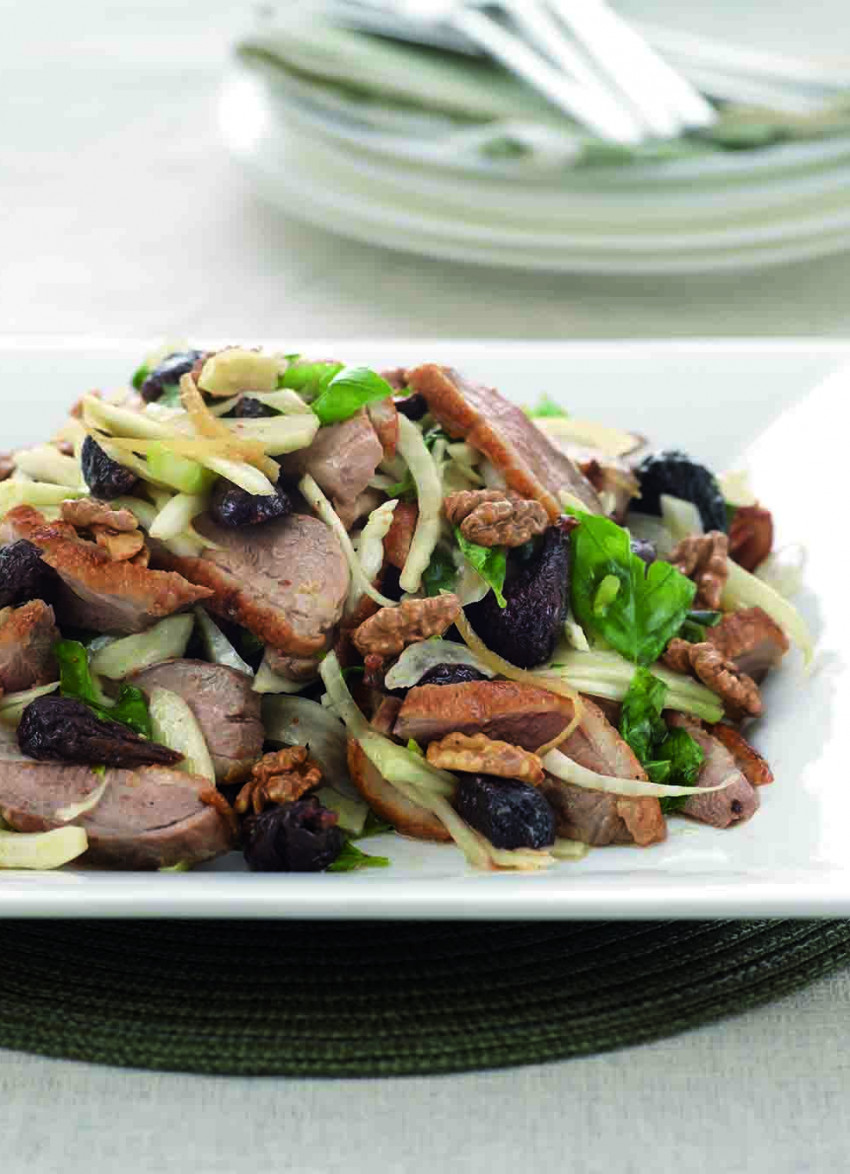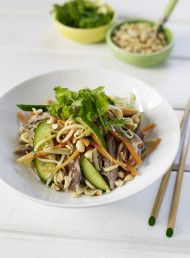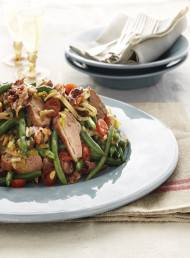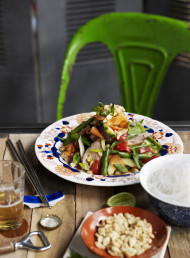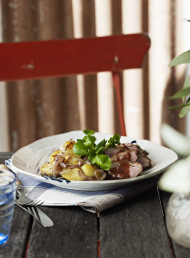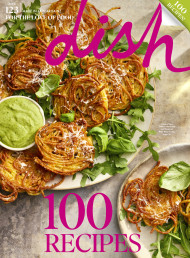Duck Breast Salad with Figs and Walnuts
Photography by Nick Tresidder.
You won't be able to get enough of this duck breast salad. Amazing bursts of flavour combining duck, figs, and walnuts dressed with a delicious fennel and lemon dressing.
Serves: 4-6
INGREDIENTS
4 single duck breasts
2 tablespoons fresh thyme leaves
2 cloves garlic, crushed
sea salt and freshly ground pepper
Salad
3⁄4 cup verjuice
1⁄4 cup extra virgin olive oil
1 clove garlic, crushed
juice of 1 lemon
1⁄2 preserved lemon, skin finely sliced
150 grams dried figs, roughly chopped
1⁄2 cup basil leaves, ripped
1 fennel bulb, thinly sliced
1⁄2 cup walnuts, toasted and roughly chopped
METHOD
Score the skin of each duck breast on the diagonal.
Combine the thyme, garlic, salt and pepper and rub onto both sides of the duck. Set aside. Heat a sauté pan with a little oil and add the duck, skin side down. Cook for 7 minutes over a medium heat then turn and cook the other side for 4 minutes.
While the duck is cooking, whisk together the verjuice, olive oil, garlic, lemon juice and the preserved lemon and season to taste. Pour into a shallow dish, large enough to take the duck in one layer. When the duck is cooked, remove from the pan and drain on paper towels. Place in the dressing, turning to coat well. Add the figs and basil leaves and turn again. Allow to sit for at least 10 minutes.
To serve: Take the duck out of the dressing and slice across the grain of the meat. Place the sliced duck back in the dish and turn to coat in the dressing. Add the sliced fennel and gently toss. Lift the salad onto a large serving platter and drizzle over any dressing left in the bowl. Scatter over the walnuts and serve with lots of fresh crusty bread for mopping up the delicious juices. Small, waxy potatoes baked in salt would be a great accompaniment.
Verjuice: In the 14th and 15th centuries French cooks used this juice made from unripe grapes. It has the tartness of lemon and the acidity of vinegar but without the harshness of either. It marries particularly well with nut oils. Use it to de-glaze pans, make vinaigrettes, or poach fruit in a syrup made from equal parts verjuice and sugar. Use white wine vinegar as an alternative in vinaigrettes or white wine for sauces or sweet applications. Available from specialty food stores.
latest issue:
Issue #123
Depending on where you live, spring can bring anything from warmer temperatures and rainy days, to hail, sleet and snow! Dish has you covered for all weather in our latest issue with everything from new season’s fresh asparagus to comforting fried chicken, three ways. With pizzas, dinners for two, recipes for entertaining, indulgent desserts, easy ‘make it tonight’ dishes, an extract from Olivia Galletly’s latest cookbook, fritters, and even a Mexican feast, this issue is jam-packed. With 100 recipes, this bumper issue is one not to be missed!

